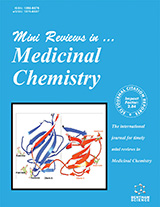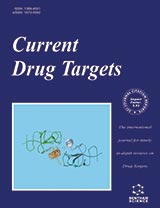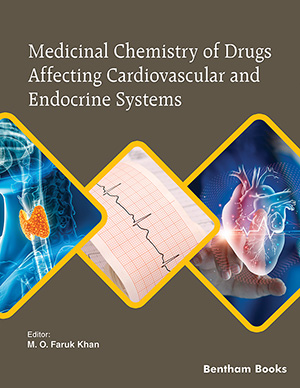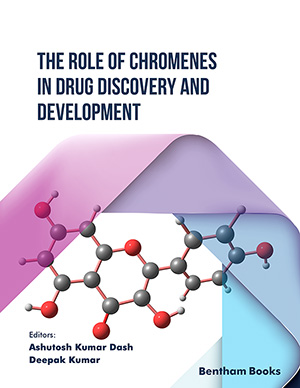Abstract
During the past 40 years, somatostatin (SST) has been a subject of intensive research. Apart from its substantial role in the neuroendocrine system, due to its dense localization in various areas in the brain, its functions as a neuromodulator have also been thoroughly investigated. Increasing evidence suggests that SST plays a crucial role in memory and cognition. Synthetic forms, biologically active peptide sequences, SST receptor agonists and SST depleting agents have been applied in animal models and in human studies of a number of neuropsychiatric disorders. The translation of experimental data into clinical use could provide novel therapies in neurodegenerative disorders involving cognitive dysfunctions. However in view of the controversial data reported concerning the different roles of the SST receptor subtypes, and the lack of SST analogs that are able to cross diffusion barriers and act selectively at these receptor subtypes, broader clinical use of SST analogs as cognitive enhancers is limited. This review covers the whole range of available experimental results relating to the behavioral effects of SST, and highlights the potential for further investigations.
Keywords: Alzheimer’s disease, animal models, cognition, Huntington’s disease, learning, memory, Parkinson’s disease, somatostatin
Mini-Reviews in Medicinal Chemistry
Title:Somatostatin and Cognitive Function in Neurodegenerative Disorders
Volume: 13 Issue: 1
Author(s): Gabor Tuboly and Laszlo Vecsei
Affiliation:
Keywords: Alzheimer’s disease, animal models, cognition, Huntington’s disease, learning, memory, Parkinson’s disease, somatostatin
Abstract: During the past 40 years, somatostatin (SST) has been a subject of intensive research. Apart from its substantial role in the neuroendocrine system, due to its dense localization in various areas in the brain, its functions as a neuromodulator have also been thoroughly investigated. Increasing evidence suggests that SST plays a crucial role in memory and cognition. Synthetic forms, biologically active peptide sequences, SST receptor agonists and SST depleting agents have been applied in animal models and in human studies of a number of neuropsychiatric disorders. The translation of experimental data into clinical use could provide novel therapies in neurodegenerative disorders involving cognitive dysfunctions. However in view of the controversial data reported concerning the different roles of the SST receptor subtypes, and the lack of SST analogs that are able to cross diffusion barriers and act selectively at these receptor subtypes, broader clinical use of SST analogs as cognitive enhancers is limited. This review covers the whole range of available experimental results relating to the behavioral effects of SST, and highlights the potential for further investigations.
Export Options
About this article
Cite this article as:
Tuboly Gabor and Vecsei Laszlo, Somatostatin and Cognitive Function in Neurodegenerative Disorders, Mini-Reviews in Medicinal Chemistry 2013; 13 (1) . https://dx.doi.org/10.2174/1389557511307010034
| DOI https://dx.doi.org/10.2174/1389557511307010034 |
Print ISSN 1389-5575 |
| Publisher Name Bentham Science Publisher |
Online ISSN 1875-5607 |
Call for Papers in Thematic Issues
Bioprospecting of Natural Products as Sources of New Multitarget Therapies
According to the Convention on Biological Diversity, bioprospecting is the exploration of biodiversity and indigenous knowledge to develop commercially valuable products for pharmaceutical and other applications. Bioprospecting involves searching for useful organic compounds in plants, fungi, marine organisms, and microorganisms. Natural products traditionally constituted the primary source of more than ...read more
Computational Frontiers in Medicinal Chemistry
The thematic issue "Computational Frontiers in Medicinal Chemistry" provides a robust platform for delving into state-of-the-art computational methodologies and technologies that significantly propel advancements in medicinal chemistry. This edition seeks to amalgamate top-tier reviews spotlighting the latest trends and breakthroughs in the fusion of computational approaches, including artificial intelligence (AI) ...read more
Mitochondria as a Therapeutic Target in Metabolic Disorders
Mitochondria are the primary site of adenosine triphosphate (ATP) production in mammalian cells. Moreover, these organelles are an important source of reactive oxygen and nitrogen species in virtually any nucleated cell type. The modulation of a myriad of cellular signaling pathways depends on the mitochondrial physiology. Mitochondrial dysfunction is observed ...read more
Natural Products and Dietary Supplements in Alleviation of Metabolic, Cardiovascular, and Neurological Disorders
Metabolic disorders like diabetes, obesity, inflammation, oxidative stress, cancer etc, cardiovascular disorders like angina, myocardial infarction, congestive heart failure etc as well as neurological disorders like Alzheimer?s, Parkinson?s, Epilepsy, Depression, etc are the global burden. They covered the major segment of the diseases and disorders from which the human community ...read more
 47
47
- Author Guidelines
- Graphical Abstracts
- Fabricating and Stating False Information
- Research Misconduct
- Post Publication Discussions and Corrections
- Publishing Ethics and Rectitude
- Increase Visibility of Your Article
- Archiving Policies
- Peer Review Workflow
- Order Your Article Before Print
- Promote Your Article
- Manuscript Transfer Facility
- Editorial Policies
- Allegations from Whistleblowers
Related Articles
-
New Therapeutic Strategy for Parkinson’s and Alzheimer’s Disease
Current Medicinal Chemistry Blood-Brain Barrier P450 Enzymes and Multidrug Transporters in Drug Resistance: A Synergistic Role in Neurological Diseases
Current Drug Metabolism MicroRNAs in Neurocognitive Dysfunctions: New Molecular Targets for Pharmacological Treatments?
Current Neuropharmacology The Impact of Docosahexaenoic Acid on Alzheimer’s Disease: Is There a Role of the Blood-Brain Barrier?
Current Clinical Pharmacology Modified Polysaccharides as Versatile Materials in Controlled Delivery of Antidegenerative Agents
Current Pharmaceutical Design Autoantibodies Associated with Psychiatric Disorders
Current Neurovascular Research Targeting Hsp90 in Non-Cancerous Maladies
Current Topics in Medicinal Chemistry Neurodegeneration in the Brain Tumor Microenvironment: Glutamate in the Limelight
Current Neuropharmacology Histone Acetylation as a Potential Therapeutic Target in Motor Neuron Degenerative Diseases
Current Pharmaceutical Design Traumatic Spinal Cord Injury Alters Angiogenic Factors and TGF-Beta1 that may Affect Vascular Recovery
Current Neurovascular Research Genetic Susceptibility to Prion Diseases in Humans and Mice
Current Genomics Neurotrophic Factors as a Protective Strategy in Parkinsons Disease
CNS & Neurological Disorders - Drug Targets Bridge Between Neuroimmunity and Traumatic Brain Injury
Current Pharmaceutical Design Targeting PPAR Isoforms Following CNS Injury
Current Drug Targets The Potential Roles of Metallothionein as a Therapeutic Target for Cerebral Ischemia and Retinal Diseases
Current Pharmaceutical Biotechnology Gene Expression Analysis Approach to Establish Possible Links Between Parkinson's Disease, Cancer and Cardiovascular Diseases
CNS & Neurological Disorders - Drug Targets Review of Antibiotic and Non-Antibiotic Properties of Beta-lactam Molecules
Anti-Inflammatory & Anti-Allergy Agents in Medicinal Chemistry Perspectives on the Tertiary Prevention Strategy for Alzheimer’s Disease
Current Alzheimer Research Melatonin and Its Therapeutic Potential in Neuroprotection
Central Nervous System Agents in Medicinal Chemistry Stem Cells: In Sickness and in Health
Current Stem Cell Research & Therapy


























